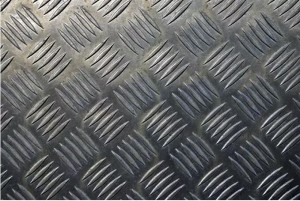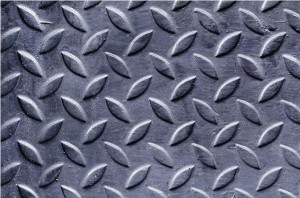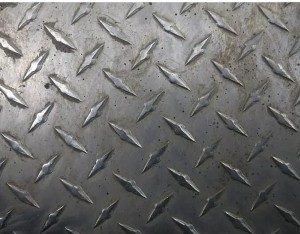Checkered Plate is used as flooring, plant escalators, work frame treads, ship decks, automobile flooring, etc. due to its protruding ribs on the surface, which have a non-slip effect. Checkered steel plate is used as treads for workshops, large equipment or ship aisles and stairs, and is a steel plate with a diamond or lentil-shaped pattern pressed out on its surface. The pattern is lentil-shaped, diamond-shaped, round bean-shaped, flat and round mixed shapes, the market to the most common lentil-shaped.
Checkered Plate on the weld needs to be polished flat to do anti-corrosion work, and in order to prevent thermal expansion and contraction of the plate, arching and deformation, it is recommended that each piece of steel plate splicing should be reserved for the expansion joint of 2 millimeters. A rain hole is also required at the low point of the steel plate.
Material: divided into stainless steel, aluminum alloy and ordinary steel plate three. On the market we commonly common ordinary steel plate has Q235B material pattern plate and Q345 Checkered Plate.
Surface quality:
(1) The surface of patterned steel plate shall not have bubbles, scars, cracks, folding and inclusions, the steel plate shall not have delamination.
(2) The surface quality is divided into two levels.
Ordinary precision: the surface of the steel plate is allowed to have a thin layer of iron oxide, rust, surface roughness formed due to the shedding of iron oxide and other local defects whose height or depth does not exceed the permissible deviation. Invisible burrs and individual marks not exceeding the height of the grain are allowed on the pattern. The maximum area of a single defect does not exceed the square of the grain length.
Higher precision: The surface of the steel plate is allowed to have a thin layer of iron oxide, rust and local defects whose height or depth does not exceed half of the thickness tolerance. The pattern is intact. The pattern is allowed to have localized minor hand splinters with a height not exceeding half of the thickness tolerance.
Currently on the market commonly used thickness ranging from 2.0-8mm, the width of the common 1250, 1500mm two.
How to measure the thickness of Checkered Plate?
1, you can use a ruler to measure directly, pay attention to the measurement of the place without pattern, because it is necessary to measure the thickness excluding the pattern.
2, to measure more than a few times around the Checkered Plate.
3, and finally seek the average of several numbers, you can know the thickness of the Checkered Plate. The basic thickness of the general Checkered Plate is 5.75 millimeters, it is best to use a micrometer when measuring, the results will be more accurate.
What are the tips for choosing steel plate?
1, first of all, in the purchase of steel plate, to check the longitudinal direction of the steel plate with or without folding, if the steel plate is prone to folding, indicating that it is poor quality, such a steel plate later use, the bending will be cracked, affecting the strength of the steel plate.
2, second in the selection of steel plate, to check the surface of the steel plate with or without pitting. If the surface of the steel plate has a pitted surface, it means that it is also a low-quality plate, mostly caused by the serious wear and tear of the rolling groove, some small manufacturers in order to save costs and improve profits, often the problem of rolling groove rolling over the standard.
3, then in the selection of steel plate, to check in detail the surface of the steel plate with or without scarring, if the surface of the steel plate is easy to scar, also belongs to the inferior plate. Due to uneven material, impurities, coupled with poor production equipment, from then there is a sticky steel situation, which also forms the steel plate surface scarring problem.
4, the last in the choice of steel plate, pay attention to the steel plate surface cracks, if there is also not recommended to buy. Cracks on the surface of the steel plate, indicating that it is made of adobe, porosity, and in the cooling process, the thermal effect and cracks.



Post time: Jan-09-2024






